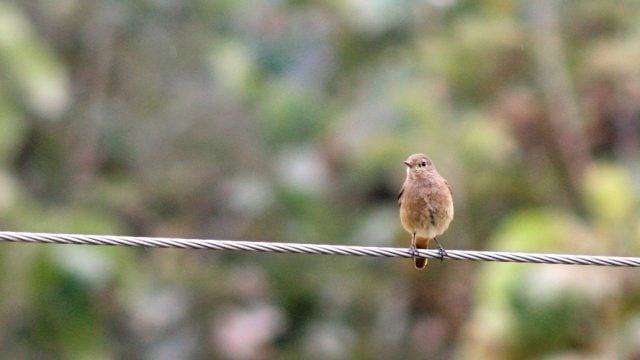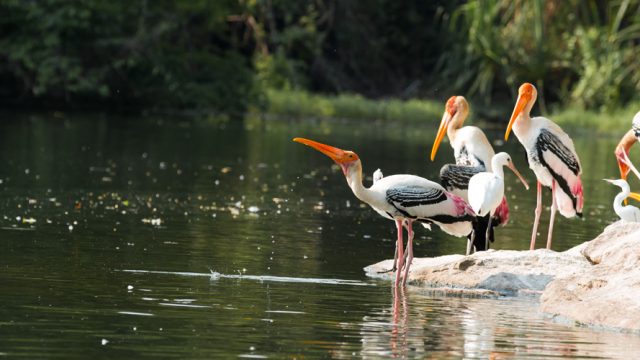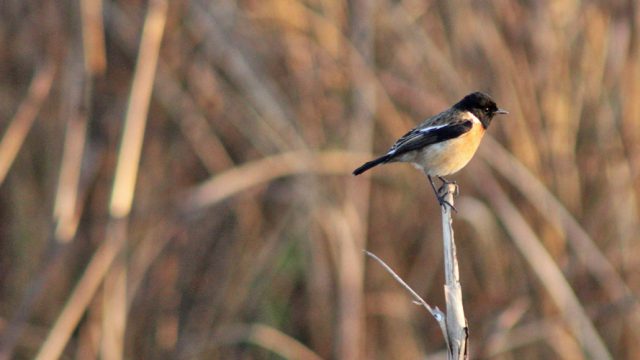Legend has it that Chambal was born of the blood of cows sacrificed by a
The sanctuary itself was established in 1979, and occupies an area of 5,400 km. About 400 km of the river has been declared a sanctuary. Some 220 km of the river’s course is flanked by mud ravines, at times extending to 10 km on either side. These are a unique geological feature that shift with the annual monsoon flooding, creating a labyrinthine topography, which became particularly infamous in the ‘70s and ‘80s for harbouring the Chambal dacoits. Thankfully their numbers have dwindled, while the wildlife in the sanctuary is thriving. Chambal’s big predators are the freshwater crocodile and the gharial.
In the 1970s, when the government realised that unchecked poaching and fishing had brought the gharial population of India to the brink of decimation, the Chambal Valley river was identified as one of the areas where a resurrection could be engineered. Over the years, close to 1,400 gharials and a few crocodiles were released in the river through a captive-breeding programme.
The river is also home to smooth coated otters, at least eight kinds of tortoises, 30 varieties of fish and the acutely threatened Gangetic dolphin, an animal particularly sensitive to polluted habitats. Its survival in the Chambal testifies to the river’s health. In recent years, though, the area’s emergence from relative obscurity has been mostly due to its avifaunal wealth: the present bird count lists 246 species of resident and migratory birds. The vegetation around Chambal mainly comprises babul, ber and shisham. While the sanctuary is open year-round, the best sightings happen November through March.
THING TO SEE AND DO
Explore Chambal by boat, and you will get to see many birds and aquatic animals. The boat ride, in itself, is a lovely experience.

Birdwatching
Apart from the abundance of food that the river’s waters generate for the birds, its banks are, for the most part, sparsely populated, and therefore very conducive for attracting birds. In UP and MP, the visibility is high, especially as the riverbanks leading up to the ravines are devoid of forests. Both Indian and migratory birds are seen here, the latter between November and March. From ruddy shelduck to barheaded geese and Indian skimmers, you will see them all.
River Safari
A river safari is the best way to see this sanctuary. Boats are arranged at the Nandgawan access point by the Chambal Safari Lodge, and will also include a naturalist’s services.
A boat ride on the river, in the UP side and in Rajasthan, offers an opportunity to spot crocodiles as well as gharials.
TIP River trips have to be booked in advance with the Chambal Safari Lodge
WHERE TO STAY AND EAT
The Chambal Safari Lodge (Cell: 09997066002, 09837415512; Tariff: ₹6,000-10,000; W chambalsafari. com) is 62 km from Agra on the Fateh abad Road at Jarar. They organise river safaris and jeep and camel trips. Accommodation is in independent cottages. Birdwatching can begin right here amongst the trees – brown hawk owls, spotted owlets, babblers, Indian rollers, tailor birds, drongos and starlings can be spotted here.
The only place for food, apart from the dhabas of Jarar or Bah, is the Chambal Safari Lodge. The food pretty standard – Continental or Indian. The buffet-style meals are wholesome. For variety, the lodge provides packed lunches for safaris.
When to go October to March Location On the Chambal river, where Rajasthan, Madhya Pradesh and Uttar Pradesh meet Air Nearest airport: Agra Rail Nearest rail: Agra
|
THE INFORMATION |
|
Tourist/ Wildlife Offices Department of Tourism UP Tourism Rajarshi Purshottam Das Tandon Paryatan Bhawan C-13, Vipin Khand Gomti Nagar Lucknow Tel: 0522-2308017, 2308916 W up-tourism.com |
|
Tourist Office UP Tourism 36, Chandralok Building, Janpath New Delhi Tel: 011-23350048, 23711296, 23322251 Sardhana |
|
Regional Tourist Office UP Tourism Vikas Bhawan, Meerut Tel: 0121-2656164 STD code 0121 Dudhwa NP |
|
Deputy Director Dudhwa Tiger Reserve Palia, Kheri Tel: 05871-233485 W dudhwatigerreserve. STD code 05871 Bateshwar |
|
Tourist Office UP Tourism 64, Taj Road, Agra Tel: 0562-2226431 STD code 0562 |
|
THE INFORMATION |
|
National Chambal Sanctuary Deputy Conservator of Forests Chambal Wildlife Division Agra Tel: 0562-2530091 |
|
Divisional Forest Officer Social Forestry Division Agra Tel: 2331297 STD code 0562 Chitrakoot |
|
Tourist Office UP Tourism Tourist Bungalow Campus Chitrakoot Dham. Tel: 05198-224218 STD code 05198 Kushinagar |
|
UPSTDC Pathik Niwas, Buddha Marg Kushinagar. Tel: 05564-273045 STD code 05564 |
Chambal River
Chambal Valley
Gangetic dolphins





